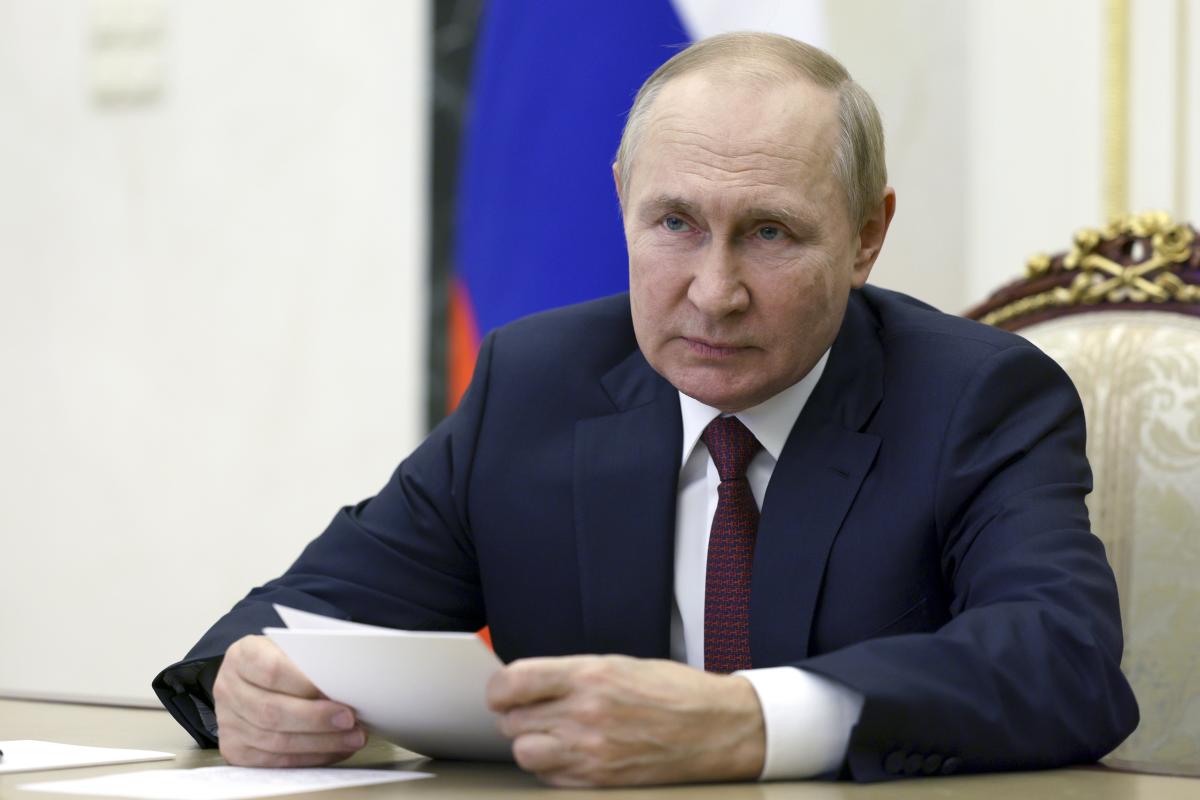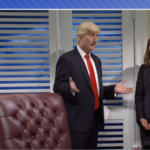WASHINGTON — For the first time since the Cuban missile crisis in October 1962, top government leaders in Moscow are making explicit nuclear threats and officials in Washington are gaming out scenarios should President Vladimir Putin decide to use a tactical nuclear weapon to make up for the failings of Russian troops in Ukraine.
In a speech Friday, Putin raised the prospect anew, calling the United States and NATO enemies seeking Russia’s collapse and declaring again that he would use “all available means” to defend Russian territory — which he has now declared includes four provinces of eastern Ukraine.
Putin reminded the world of President Harry S. Truman’s decision to drop atomic weapons on Hiroshima and Nagasaki, Japan, 77 years ago, adding, “By the way, they created a precedent.” On Saturday, the strongman leader of the southern Russian republic of Chechnya, Ramzan Kadyrov, said Putin should consider using “low-yield nuclear weapons” in Ukraine, becoming the first prominent Russian official to openly call for such a strike.
Sign up for The Morning newsletter from the New York Times
Senior U.S. officials say they think the chances that Putin would employ a nuclear weapon remain low. They say they have seen no evidence that he is moving any of his nuclear assets, and a recent Pentagon analysis suggests the military benefits would be few. And the cost for Putin — in a furious international response, perhaps even from the Chinese, whose support he needs most — could be tremendous.
But they are far more worried about the possibility now than they were at the beginning of the Ukraine conflict in February. After a series of humiliating retreats, astoundingly high casualty rates and a deeply unpopular move to draft young Russian men into service, Putin clearly sees the threat of his nuclear arsenal as a way to instill fear, and perhaps to recover some respect for Russia’s power.
Most important, he may see the threat of unleashing part of his stockpile of roughly 2,000 so-called tactical nuclear weapons as a way to extort concessions that he has been unable to win on the battlefield. Such weapons involve much smaller, less-powerful warheads than those used in intercontinental missiles, which can destroy whole cities. Some tactical nuclear warheads are small enough to fit in individual artillery rounds, although they can still devastate and irradiate a few blocks, or a single military base.
Some Russian military analysts have suggested exploding a tactical weapon over a remote place like the Black Sea as a demonstration, or perhaps actually using one against a Ukrainian base.
“This is not a bluff,” Putin said last month, a reminder that making first use of nuclear weapons is an integral part of Russian military strategy. Last weekend, President Joe Biden’s national security adviser, Jake Sullivan, responded that any nuclear weapon use would result in “catastrophic consequences” for Russia, adding that in private communications with Moscow, the United States had “spelled out” how America and the world would react.
Such threats and counterthreats, seemingly right out of the worst moments of the Cold War, are exactly the kind that most Americans and Russians thought ended with the collapse of the Soviet Union.
For a quarter-century, both sides celebrated a reduction in their strategic weapons, the intercontinental ballistic missiles that can reach across oceans. Congress spent billions of dollars in the 1990s on programs that paid for dismantling old Soviet warheads and blending them down into fuel for nuclear power plants. For years, American homes were lit, in part, with the remnants of city-busting bombs. When nuclear threats were made, it was mostly by aspiring atomic powers, like North Korea, which has not yet demonstrated that its weapons can reach American shores.
But in the past seven months, that has changed.
In issuing his warning to Russia last week, Sullivan declined to describe the playbook of U.S. or NATO responses, knowing that one key to Cold War deterrence was some degree of ambiguity.
But in background conversations, a range of officials suggested that if Russia detonated a tactical nuclear weapon on Ukrainian soil, the options included unplugging Russia from the world economy or some kind of military response — although one that would most likely be delivered by the Ukrainians with Western-provided, conventional weapons.
For their part, Russian analysts and officials see the specter of nuclear conflict as giving a distinct advantage to their side.
Because the outcome of the war in Ukraine is of existential significance to the Kremlin, but not to the White House, they say, Russian officials seem to believe they would have the advantage in the test of wills that nuclear brinkmanship represents.
Dmitry Medvedev, a former Russian president and the hawkish vice chair of Putin’s Security Council, laid out that thesis this past week in a post on the Telegram social network. If Russia were forced to use nuclear weapons against Ukraine, he argued, it was unlikely that NATO would intervene militarily because of the risk that a direct attack on Russia could lead to all-out nuclear war.
“Overseas and European demagogues are not going to perish in a nuclear apocalypse,” he wrote. “Therefore, they will swallow the use of any weapon in the current conflict.”
As the full extent of Ukraine’s gains in its September counteroffensive became apparent, the Biden administration intensified its study of the steps that Putin might take to reverse the perception that the Russian army was losing the war. Administration officials quickly saw some of their predictions come true, as Putin announced a mobilization of military reserves despite the dissent it provoked.
Now, with the annexation of Ukrainian territory, worry is rising in Washington. Should Ukraine be able to build on its success, and Putin face humiliating defeat, U.S. officials are concerned he might quickly push through the remaining steps and consider the use of a nuclear weapon.
And with Russian forces retreating from the strategic railroad hub of Lyman — in territory annexed by Moscow on Friday — Russia continues to lose ground in eastern Ukraine.
Putin clearly sees Russia’s nuclear arsenal as the foundation of what remains of Russia’s great power status.
He has trumpeted its world-destroying potential in his state-of-the-nation speeches and has insisted that in the event of a nuclear war, “we would go to paradise as martyrs, while they would simply perish.”
The revelation of the Ukraine conflict — that Russia’s conventional forces were poorly trained, unimaginative and ill-equipped — has made Putin all the more dependent on his unconventional weapons, an inherently unstable balance of forces.
“We’re in a situation in which superiority in resources and conventional weaponry is on the side of the West,” said Vasily Kashin, who specializes in military and political issues at the Higher School of Economics in Moscow. “Russia’s power is based on its nuclear arsenal.”
The problem for Putin is how to wring real-world advantage from the destructive force of Russia’s nuclear warheads without actually using them. To some degree, he has been successful. Biden’s reluctance to put U.S. or NATO troops into direct combat roles, or to provide Ukraine with weapons that could strike deep inside Russia, is rooted in concern about nuclear escalation.
But Putin also faces constraints. His threat to use nuclear weapons must seem credible, and the repeated incantation of nuclear threats can undermine their effectiveness. The threat may be more effective than actually using a weapon because the cost to Russia of breaking a 77-year taboo could be astronomically high. Most experts think he would reach for them only if Russia — or Putin himself — felt an existential threat.
“The chance that Putin would strike out of the blue seems very low,” said Graham T. Allison, the author of a seminal 1971 book about the Cuban missile crisis, “Essence of Decision.” “But as Kennedy said back then, the plausible scenario is if a leader is forced to choose between a catastrophic humiliation and a roll of the dice that might yield success.”
Allison suspects Putin will not face that choice unless Ukraine succeeds in pushing Russia out of the areas Putin annexed Friday.
For that reason, the next few weeks could prove a particularly dangerous time, a range of U.S. and European officials agree. But Putin is not likely to use a nuclear weapon immediately. His initial steps, according to the officials, would probably involve a sabotage campaign in Europe, attacking Ukraine’s energy infrastructure or targeting senior officials in Kyiv, Ukraine’s capital. Some officials wonder if the attacks on the Nord Stream pipelines may have been a first step — although it is not clear Russia was behind that sabotage.
But by escalating his nuclear threats in combination with the annexation, Putin appears to have two goals in mind. One is to scare the United States and NATO from direct intervention in Ukraine. The second is to force the West to back off supporting Ukraine at all, or to perhaps force the Ukrainians to the negotiating table in a disadvantageous position.
In Russia, the airwaves are filled with threats that constantly refer to Moscow’s nuclear options.
In a recent state television interview, foreign policy analyst Dmitri Trenin said that Russia needed to convince Washington that escalation could lead to nuclear strikes against the American mainland.
“The American strategy of inflicting a strategic defeat on Russia is based on the belief that Russia will not use nuclear weapons: Either it will be afraid, or it will consider that the destruction of civilization is still too high a price for maintaining its position,” Trenin said. “And here, in my opinion, lies a potentially fatal miscalculation for all of humanity.”
But the threshold at which Putin would resort to nuclear weapons — or how he would use them — is far from clear. Another analyst, Ivan Timofeev, said in a phone interview that he believed that Putin would use them only in the event of direct NATO intervention in Ukraine.
Using them against Ukrainian forces in the context of the current war would bring limited military advantage while deepening Russia’s international isolation, he said.
“I don’t see the possibility that China or India or any other country friendly to Russia would support such a decision,” said Timofeev, the program director for the Russian International Affairs Council, a research organization close to the Russian government. “If you look at interests pragmatically and rationally, this scenario is not beneficial to Russia.”
Kashin, the Higher School of Economics professor, said that his analysis of recent statements by Russian officials led him to conclude that Putin’s annexation Friday was a signal that further major gains by Ukraine could lead to nuclear use.
“These territories will not be given up,” Kashin said.
Putin’s veiled threats about using nuclear weapons have suggested he has also given thought to large-scale, game-changing strikes. He said last year that anyone threatening Russia’s core interests would face an “asymmetric, swift and tough” response. And in June, he was vague when asked how he would respond if Ukraine and the West crossed certain “red lines” in the war.
But Putin warned that Russia could target “decision-making centers,” a broad term that analysts have interpreted as major government buildings and other military and political hubs.
“With regard to the red lines,” he said, “let me keep this to myself because on our part, it will include fairly tough actions targeted at the decision-making centers.”
© 2022 The New York Times Company




